 siggraph
siggraph
siggraph
siggraph
Art Gallery Presentations
 Full Conference Pass
Full Conference Pass Full Conference 1-Day Pass
Full Conference 1-Day Pass Basic Conference Pass
Basic Conference Pass Experience Pass
Experience Pass Exhibitor Pass
Exhibitor Pass
Date/Time:
28 - 29 November 2017, 10:00am - 06:00pm
30 November 2017, 10:00am - 04:00pm
Venue: BHIRAJ Hall 3 - Experience Hall (Art Gallery)
Location: Bangkok Int'l Trade & Exhibition Centre (BITEC)
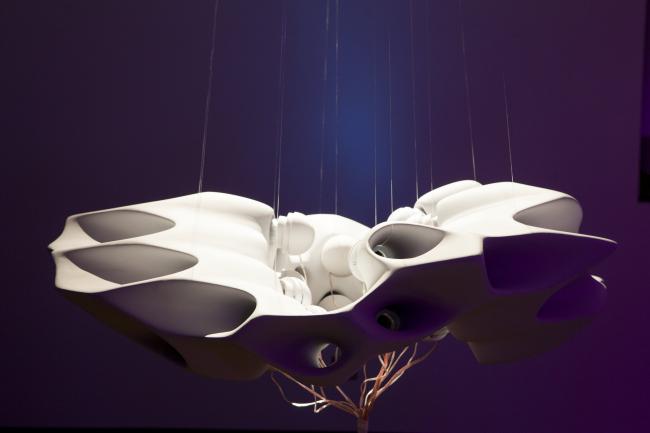
Artists Statement: The notion of embodiment is built upon the argument that intelligence is shaped by the body. AI researchers Pfeifer and Bongard argue that our thoughts have their foundation in our embodiment—in our morphology and the material properties of our bodies. Furthermore, they argue, embodied intelligence, has important implications for our understanding of both natural and artificial intelligence.
Found upon this argument, we intended to explore the idea of a sonic intelligence: learning, experiencing, reacting, and finally, "thinking" in sound. Can we model such a system? A system with a body whose morphology is based on picking up and sending sound signals, a system who can learn and evolve in its response, a pseudo ‘being'...
In an effort to explore such sonic ‘being', we were inspired by the notion of umwelt, as described by Jakob Von Uexküll. Umwelt is a model of an organism's relationship to its environment. It examines the subjective experience of the surrounding world by the individual organism through its specific morphology, sensory and motor network.
So, we algorithmically generated a model for an (imagined) organism with a physical body: HIVE. HIVE exists in purely acoustical umwelt. Its only mode of sensing and responding to its environment is through sound, which is thoroughly reflected in its morphology. It is comprised of an exoskeleton whose internal structure of tightly packed horn-like tubes act as acoustical waveguides amplifying, filtering, and diffusing the sound from the 16 embedded transducers.
In addition to this, several different types of sound-based sensors extend from this exoskeleton. It listens, senses distances and footsteps. We exist in its world through only acoustic signals. This is our sonic reflection, our sonic foot-print. Threatening or friendly, HIVE ‘learns' from this sonic image of its environment and modulate its responses, reflexively creating a world of sound with its audience.

Artists Statement: We have wanted to create an alternative universe. Originally, the ether which is a part of the title means a medium of light. Light is not with substance. Our concept is to create a atom of media for existence, which is invisible. To achieve this concept, we thought to need an autonomous behavior, not god. These devices seem to be physical neural network, so have a relation of body and mind.
In order to build the etheroid system, it is necessary to have accessible conditions where etheroids are within certain distance of other etheroids. To achieve this, I decided to use an infrared LED that illuminates invisible lights within a certain range together with a general communication module called XBee. Specifically, the current etheroid use XBee to send information to all other etheroids while an infrared LED emits illumination. Next, the etheroid that received the infrared ray then conveys its information to the current etheroid, and the current etheroid builds an information list of surrounding etheroids. The information list corresponds to a temporary storage area. The system of etheroids randomly selects one etheroid, sends the information to that chosen etheroid, and then proceed to select the next etheroid. Since the list is constantly updated, operation will continue even if the number of etheroids increases or decreases.
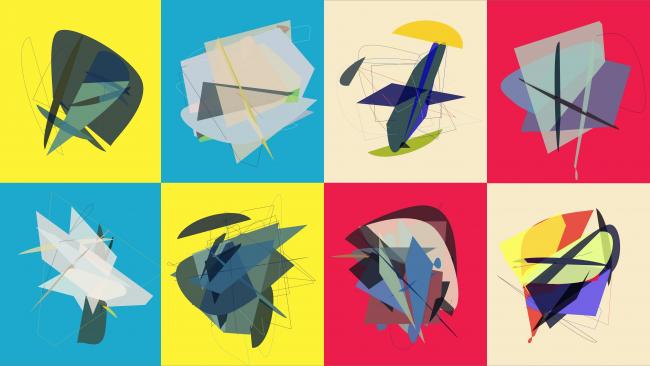
Artists Statement: My works focus on exploring hidden information of physical spaces by transforming them into virtual spaces with refined data which are usually spatially displayed in a continuous, unrepeated, and unforeseen situation. The virtual spaces aim to provide a richer expression in visualization and a greater degree of artistic presentation for viewers to experience new perspectives that go beyond the original physical spaces. In the transformations, novel aesthetics, narratives, cognitions, or awarenesses, may appear that can hardly be directly observed, experienced, or recognized in the real world. Camera, either static or mobile, single or array, regular or depth, has been heavily used to capture data from the physical world. The data are analyzed, processed, and restructured in one or several computational models serving as connections between the physical and the virtual world. Interactions between people and their relations to the surroundings are another important aspect in my works. It's always fascinating to see how one space can be shaped and depicted differently in the visual world based on different people's behaviors, movements, and reactions.
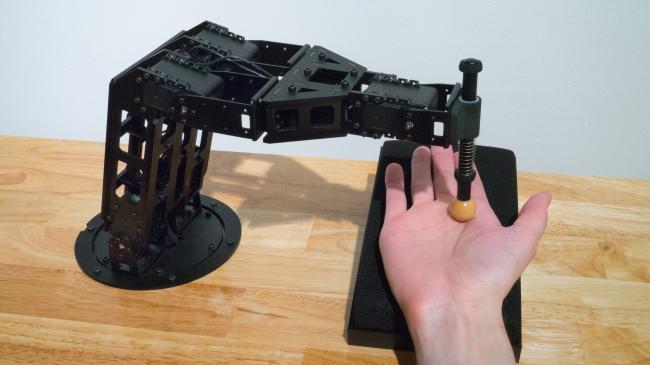
Artists Statement: We interact with our computers constantly, touching them more than we touch any person in our lives, and grooming them inside and out. For a month, I recorded all interactions with my phone and fed them into a machine learning system, which then output new, learned gestures. These "hallucinated" movements are awkward yet eerily accurate swipes, taps, and typing based on what my computer has learned from my interactions with it. Presented as an interactive sculpture, the gestures are enacted by a small robotic arm on the visitor's palm as they sit at a low, altar-like table. Notions of "you," "me," and "I" are doubled, enacting the understanding of the machine and at the same time a self-portrait of my interaction.
Developed while artist-in-residence at Bell Labs, this project seeks to explore the personal relationships we have with computers and technological systems. Following an approach laid out by Object-Oriented Ontology, rather than see human-centric metaphors as a failing when trying to understand an object, my work attempts to find poetic ways to increase the agency of and empathy for computers as a way of unpacking that relationship. Mind/body dualism is then not only about the human self; this piece extends the conversation to include bodies and minds of our technological devices, and to complicate the notion that we are separate from them at all. By using a machine-learning system trained on the intimate gestures of interacting with my phone, the piece's output is not canned but a way to summarize my phone's understanding of our relationship.

Artists Statement: My practice examines the strategies of how we perform—the systems of control we set in place, the identities we construct, and the way we negotiate our psychological, tangible and virtual positions. Most recently I find myself questioning the greater emphasis placed on physical experiences as a measure of authenticity/intimacy in an age where the boundaries between physical reality and the virtual become nearly indistinguishable. Employing broader themes such as militarism, religion, queer sexuality and technology, I expose and challenge the changing condition of bodies and psyches as they collide against each other within these often dysfunctional atmospheres. While my primary discipline is in video/animation and other new media, my practice is interdisciplinary—manifesting in such other formats as installation, performance, and drawing. The tension/collision between the "real" and the "virtual" as they position themselves for control drives my current projects. At the surface of this current conversation is an exploration of what I am looking at as a new kind of queer technosexuality—an identity/experience in which the supremacy of physical body-to-body contact is questioned, and virtual sexualities, and hybrid techno-body sexuality exists along a continuum of experience devoid of traditional hierarchies. This rises to the surface in this submitted project which incorporates a virtual erotic situation that ignores the role of genitalia in favor of hand-based penetration via usb ports implanted in skins of 3D modeled characters. Bodies and environments both "real" and "virtual" contend with this unstable system, and are perpetually interrupted by seemingly meaningless signs and symbols signs that queer the haptic perception of bodies, actions and icons. Likewise the rigidity of modernist frameworks for coding and identifying "form," "action," and "body" collapse in favor of a field of conceptual possibilities outside of binary perception.
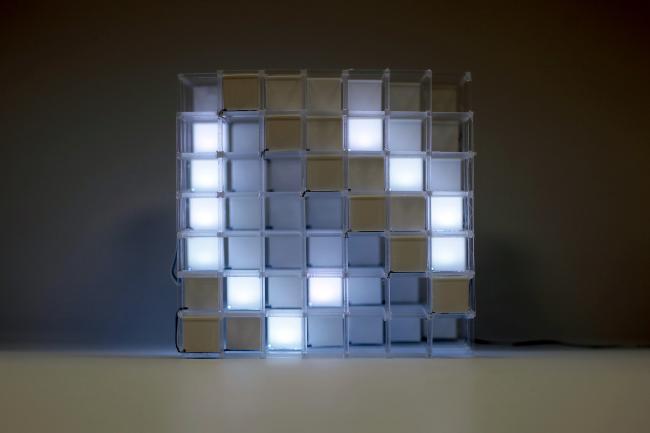
Artists Statement: The letters and numbers that we humans use for communication are two-dimensional symbols. However, we live in a three-dimensional world. So, there should be a way to write or display characters multidimensionally. Based on this premise, I have created kinetic displays such as One-stroke (SIGGRAPH Asia 2016 Art Gallery), and have studied motion typographies using them. As a result, it became clear that the time, movement and fluctuation that the characters had were visualized by displaying characters in a multidimensional way.
7x7 is also one of my studies of multidimensional motion typography. This display consists of 49 pixels. These pixels do not overlap in the front, at the back, up, down, left or right. Therefore, each pixel is able to represent all six directions. Using this new display, 7x7 expresses "Iroha," which is an old Japanese pangram that expresses one of the aesthetics called "Mujo (impermanence and ever changing)." From the front, people can see 49 characters (Hiragana including space) changing. However, when people see it from other directions, the flow of time and its fluctuation are visualized as unique gradation patterns. For those who cannot read Japanese, those patterns will also appear like characters. Even if that character cannot be read in any way, 7x7 certainly displays the impermanence of Iroha in mid-air.
Words are created by human beings, and words are like human beings. Text is sometimes referred to as "body" in English. And we human beings communicate with each other using language that represents our "mind." Words are not only labels for objects, but also a kind of existence in themselves. Words change and evolve with the times. Therefore, I think that making a device to display words is the same as making a perfect android or a human clone.
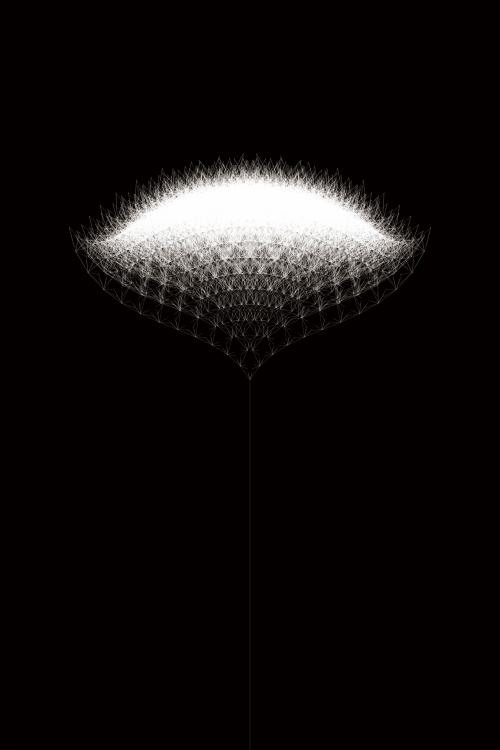
Artists Statement: The mirror surface does not just reflect the image of a person, but also functions in equal measure as the presentation surface of the interactive installation. On the basis of a fractal features and bio-signals, and recursive algorithm, the data that is measured is transformed into the form of a growing virtual plant. The virtual dandelion blooms when grasp viewer's data, shows diverse forms and behaviors control by human's live expression. In this piece, smart technology and media art point to the importance concept of live, while virtual patterns underscore the symbiosis of data visualization and human mirroring.
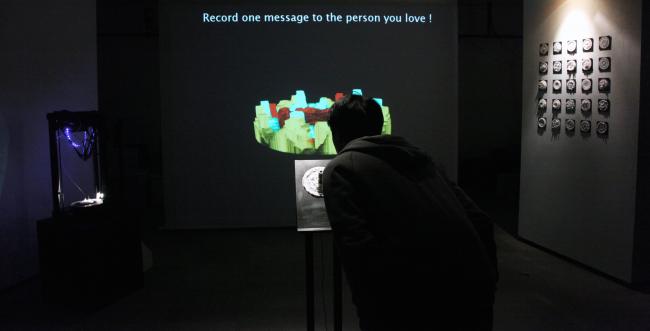
Artists Statement: We invite the audience to stand in front of the voice reception installation and say a few words to their loved ones. These messages will be processed by the processing computer program in real-time and converted into dynamic data images according to audience's volume and frequencies of voices. The messages can also be immediately converted into 3D printing model files, which can then be printed into unique white vinyl disc-shaped objects engraved with each person's own identity markings. In the end, each of the 3D printed objects will be displayed on the wall. Audience will be able to use the AR interface on the mobile device to replay the messages and videos corresponding to each of the 3D prints. They will also be able to find their own 3D printed object which stored Their unique dynamic audio and message and memory recorded by them. Through this work, we discuss how in the digital age, all of our messages may someday become souvenirs to be stored, printed, and replayed records. Through exhibition in different countries and locations, and the collection of messages to their loved ones by a large number of people, this installation has the potential to become a big database. Gradually, with an ever increasing number of messages recorded, it might even become a museum for sound and memory.
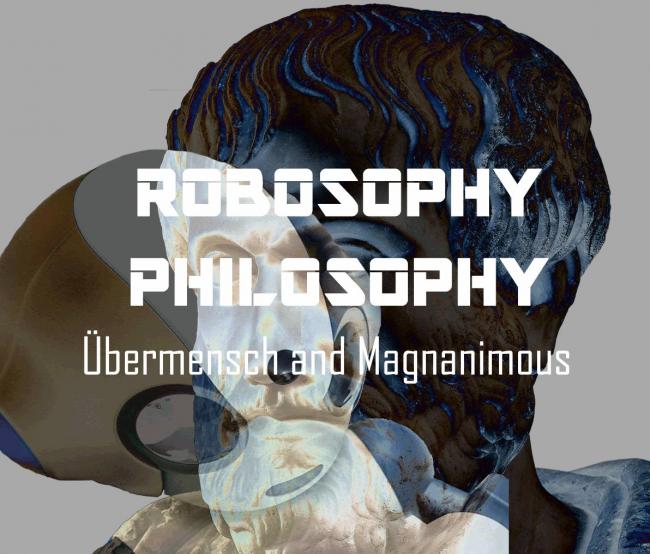
Artists Statement: Project Robosophy Philosophy does not have any pretensions to be classified as artwork but rather "anti art" as tends to criticize contemporary aesthetic, cultural and social changes as result of mutual interaction between people and technology.
Central characters of this interactive socio-critical drama are Ethic Robot and Overman Robot. The first one is feed with knowledge collected from some of Aristotle's main publications and second one from Nietzsche's. In the philosophical discussions between the two robots will be only facts without interpretations, content without context. Robots are mixing words of Aristotle and Nietzsche based on calculations and algorithms. If grammar is the "metaphysics of the people," as Nietzsche claimed, then discussions in the installation is "metaphysics of the machines" and as such ant-words or anarchistic grammar. It is a vision of transfer of knowledge in the future and present criticism of society and technoculture which is allowing brutal destruction of human context replaced with artificial and superficial. Key technical novelty presented in Installation Robosophy Philosophy is the combination of chatbot technologies and Recurrent Neural Network (RNN) models that will enable reinforcement learning in order to create artificial conversational agents who will achieve human level performance. We found that our installation concept highly correlates to the proposed Art Gallery idea "Mind-Body Dualism" especially to "Mind-Body-Machine" through proposed conceptual novelties:
- Robot-Robot Interactions as new interaction phenomena and Human Third-Party Neo Technological Experience.
- Humanless creative process conducted by Artificial Conversational Agents.
- Using Cyber Clones as creative and artistic medium.
- Art of AISense or Machine-Context Art.
- Unsupervised and reinforcement learning of conversation agents.
The installation tackles type of works and artistic forms related to:
- Robotics and responsive media
- Multimedia installations, socially engaged art.
- Collaborative projects between the fields of art, science, and technology
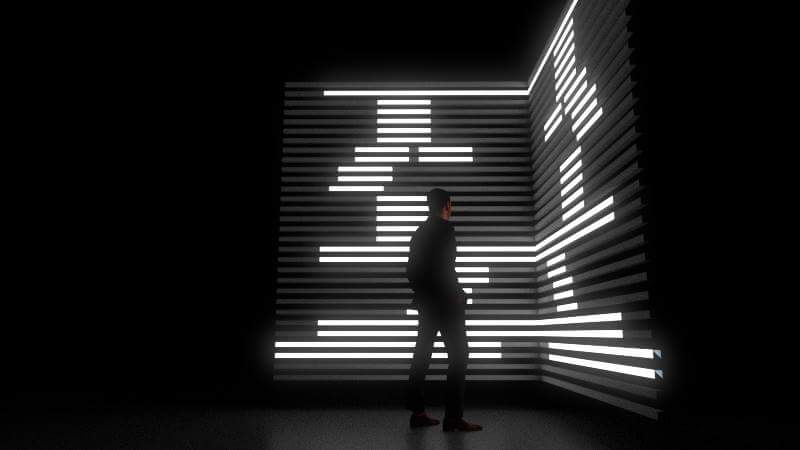
Artists Statement: We are in fact already cyborgs, replicating ourselves as avatar forms online. Our cellphones and computers act as extensions of our own neural networks, imparting a boundless knowledge of facts and figures. B/W MIND is an experiential piece designed to manifest the interconnection humans have with technology.
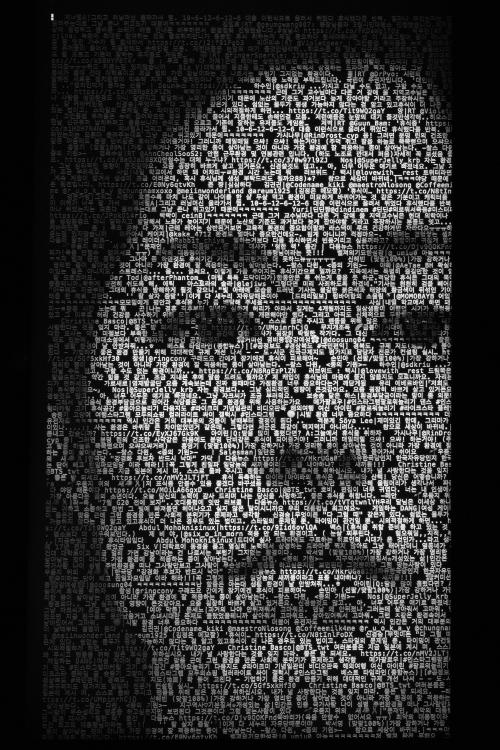
Artists Statement: This project focuses on the imperfections of social systems and the potential power art holds that may possibly change such systems. This is based on the faith that emotions and sentiments hold the power to fill in the cracks, created by deficiencies and irregularities, in society, to complete it.

Artists Statement: Hwayong Jung used new technology as tool to create experience that extend and inform his creative process. It enable him to draw and re-interpret classical art and design methodologies via new technologies in order to open new ways of creation and visual experiences. Project Mantra is a digital panorama that represents hyper-realistic landscape with the collapse of Body language and sound generated from digital object and human are permitted into the digital scenario, and gives birth to the new cycle of synthetic beauty. A traditional dance called SEUNGMU which is a Korean traditional dance . It is a mixture of flowing movements and motionlessness, based on a rhythmic structure in the complexity of the transformation in minimalistic, eccentric and intense expressions. It creates randomly, but meticulously calculated images - a beauty created by human and images made by machine. The sound of the piece also cycles through organic forms and digital ones. The ambient aura of peaceful drones is punctuated by driving drums, and eventually into a digital sound wash that marries with the distorted images. Inside of endless communication between them, a new experiential form of vision and sound will be developed. An exhibition space will provide an artistic experience and endless digital sound for the audience and an analogue communion with numerous images depicted by SEUNGMU, which expresses human anguish and agony in dynamic and sensitive movement along with tradition melodies, drumbeat and musical codes. In reviving and re-contextualizing traditional into digital scene and contemporaneity, to directly combine a culturally deeply imbedded art form with the tools of digitalization, and dominates the contemporary culture leading to a new art form.
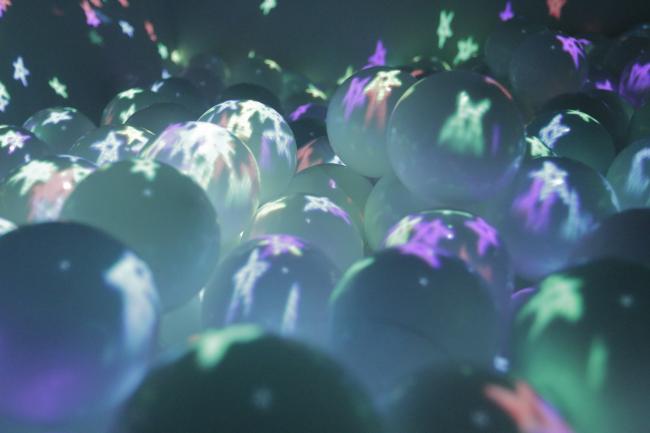
Artists Statement: Is it possible for machines to feel emotions? As we know for now, machines have no emotion. But if we humans teach them, will they be able to learn? (A)I FEEL is a project dedicated to find answers to our questions by creating a teaching & learning process between humans and a machine. To teach the machine, it asks each user to draw a picture which represents a specific emotion. The picture will be recognized then memorized as one of representatives of the emotion. Then, to demonstrate what the machine has learned, the user can draw pictures to portray his/her emotion at the moment. The machine will interpret user's emotion and colors the picture accordingly. The whole process will be visualized as an interactive installation which encourages people to participate in the project. Mind-body dualism is the concept that revolve around machines that can think, so we think that this creation would be a perfect fit for submission to Art Gallery section.
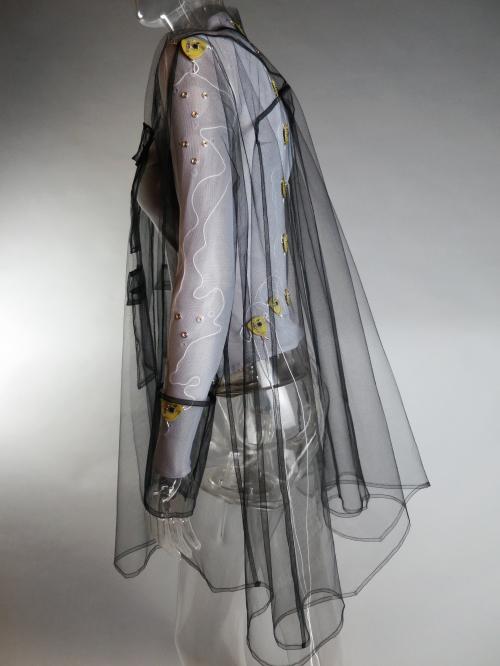
Artists Statement: Technology is not neutral. We're inside of what we make, and it's inside of us. We're living in a world of connections — and it matters which ones get made and unmade.
—Donna J. Haraway, "A Cyborg Manifesto", 1991
The Embodisuit allows its wearer to map personally chosen signals from an IoT platform to physical sensations on their body. The wearer customizes the garment with haptic modules attached by snaps to create sensations of heat, cold, vibration, and more. These sensations can be constant or infrequent, subtle or jarring, singular or grouped, and they are entirely configurable by the wearer for both practical and poetic purposes.
In addition to showcasing novel e-textile innovations, the Embodisuit demonstrates the potential of the application of embodied cognition to wearables. Knowledge can experienced ambiently without necessitating the interpretation of symbols by the conscious mind. Experiencing information through the body is more natural and efficient but also affords opportunities for greater imagination and meaning-making. The suit empowers the wearer to reconfigure the boundaries of their self tying them to the people, places, and things that are important to them. It both critiques and offers an alternative to current trends in wearable technology. Challenging the assumptions of the Quantified Self, the Embodisuit is a garment of resistance. Instead of harvesting data from the wearer to be sent elsewhere, it allows the wearer to take data in through the skin.
We envision the Embodisuit as a way to rebalance our data ecosystems, taking back control of the configuration of our boundaries and the trajectory of our cyborg evolution. Furthermore, we hypothesize that by changing the way people live with data, it will change the type of data that people create.
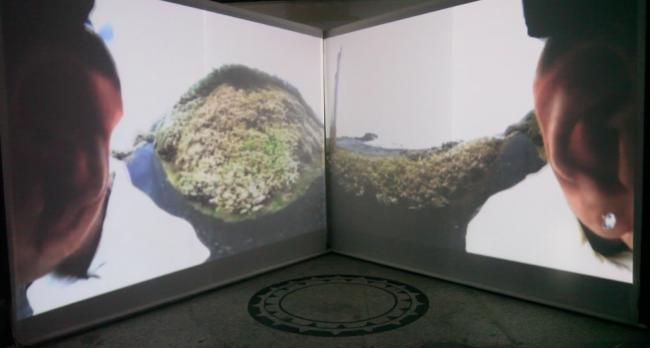
Artists Statement: In Syuhai, where I grew up, there is an old trail that connects the "Puyuma to Longkiau". My hometown and the area surrounding it is home to a large population of indigenous people, and their ancestral spirit is the hundred-pace pit viper. Therefore, I used a 360 degree camera to capture the the left and right sides of the trail, and converted the image to simulate a half-human, half-snake perspective. With these images, I invite viewers to put on the VR device, and together enter the imaginary world of a hundred-pace pit viper traversing this ancient trail.
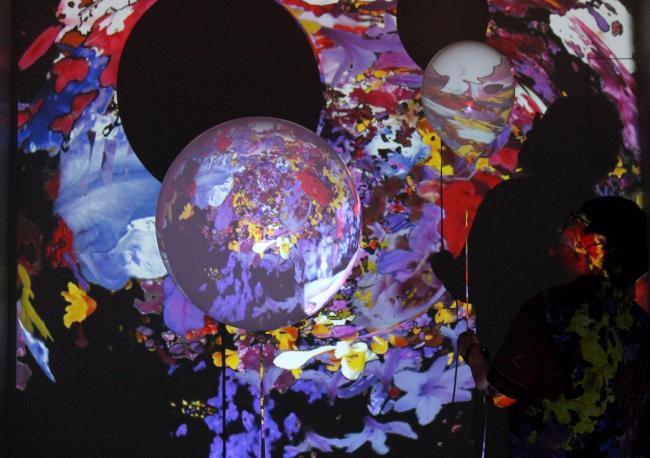
Artists Statement: An outcome of Sala Wong and Peter Williams' remote collaboration of technology-augmented walking, Wandering World is an interactive animation and sound installation and nature morte-spectacle. The piece amplifies and distills Wong and Williams' shared states of (dis)embodiment, (dis)connection and (dis)orientation in the wake of global changes such as Brexit and the 2016 US Election. Situated in different geographic (and predominantly political) locations (California and Indiana, USA), the artists simultaneously walked, connected to each other and world events through mobile technologies and using 360-degree, omnidirectional cameras to capture images of their respective surroundings. Amassed and whirling within concentric, virtual spheres, flowers compete for attention as photographic subject matter - displacing any semblance of focal point, compositional or pictorial consideration. Visitors to Wandering World are offered helium balloons and invited to wander the installation space. As they do so, the stereoscopic, 360-degree and projection-mapped animations fall upon the balloons' surfaces, producing a continuous flow of physical and virtual spaces. An uneasy contemplation, the images, interactions and sounds presented in Wandering World express a desperate and self-defeating attempt at obliterating our collective, perpetual states of distraction.
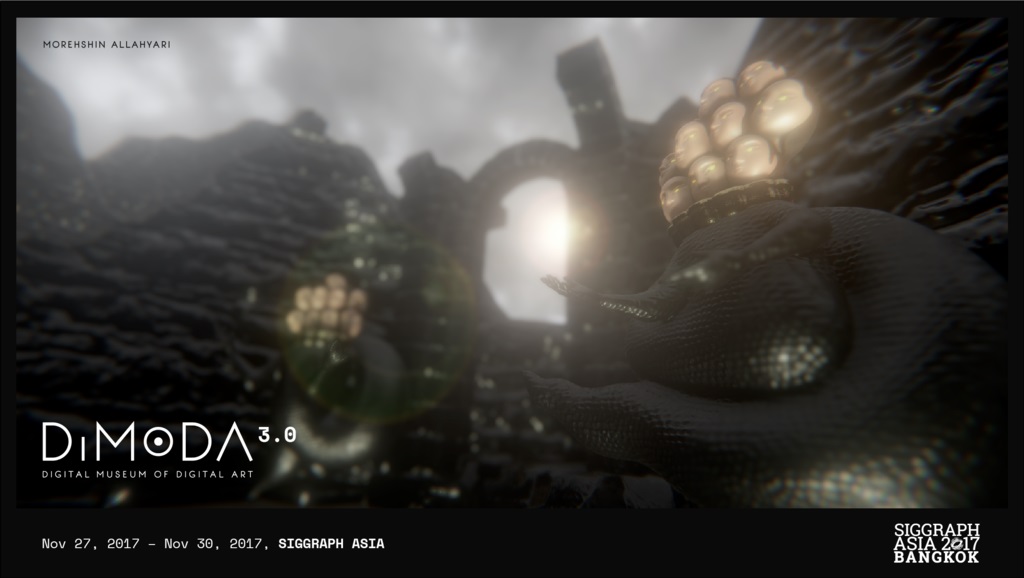
Artists Statement: DiMoDa is proud to present its third full exhibition with two parts: Gateways and Talismans (with artwork by Morehshin Allahyari, Paul Hertz, Rindon Johnson, and Shane Mecklenburger), curated by the DiMoDA Team, and Mind/Body Dualism (with Korakrit Arunanondchai, Debbie Ding, Vicki Dang, and Bani Haykal), curated in collaboration with Nhung Walsh for Siggraph Asia 2017.
-Mind//Body Dualism examines the topic of existence as a physical being and digital being simultaneously, adding nuance to the Cartesian idea of separation of mind and body and proposing yet a 3rd separation: The virtual body.
-Gateways and Talismans explores the way in which artists use digital technologies as magic(k) tools and objects. Each artist takes different approaches to the experience of and idea of witchcraft. Summoning ancient Persian genies with 3D scans, opening magic circles in abandoned casinos, navigating an orchestral and surreal landscape and Listening to disembodied voices reciting poetry in the forest.
The Digital Museum of Digital Art (DiMoDA) is a virtual institution, dedicated to commissioning, preserving and exhibiting cutting edge VR artworks. Conceived in 2013 by Alfredo Salazar-Caro and William Robertson, DiMoDA has released 3 exhibitions, featuring 15 unique, artist-designed, VR experiences. In 2015 DiMoDA 1.0 launched with Transfer Gallery in New York, and has traveled the world since. Thousands of virtual exhibitions have been downloaded worldwide and IRL Exhibitions include cities like New York, Miami, Chicago, Berlin, Dusseldorf, Dubai, and Bangkok among others. To learn more and access previous exhibitions: https://dimoda.art
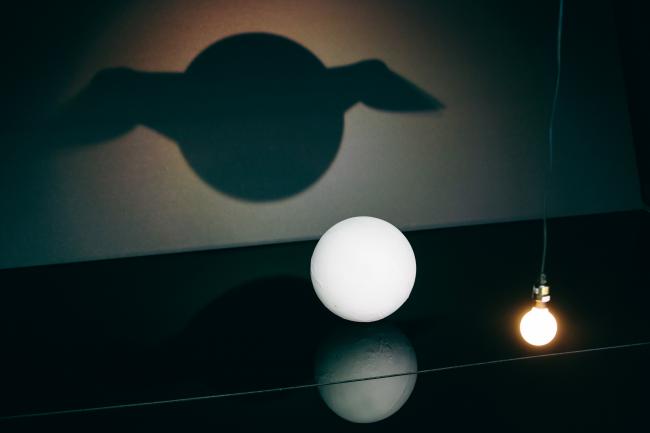
Artists Statement: Shadows, the remnants of physical forms created through the interplay among light, object, and space, are often depicted as incarnations of the mind. The projective nature of light results in distorted shadows, not any different from how human perception is governed by subjectivity. As in the intentionally misspelled word REMNANCE, the plastic relationship between material and mind is captured through programmatic modifications of a shadow. A light bulb hanging from the ceiling can be swung like a pendulum, revealing hidden faces of the shadow. The contrast between a mundane object and its dynamic shadow makes even the most simplistic reality no longer simple or disregardable. The continual changes of the shadow lead to a spectrum of self-reflection, where the inspection of the shadow becomes a projection of inner avenues. The behaviors of the shadow demystify as the exploration goes on and the introspection unfolds in parallel. The vignette "Dream of Flying" embodies the human desire to defy gravity. A flying shadow is perceived as a distant wonder at first, however, one soon realizes it is the dream deep inside.

